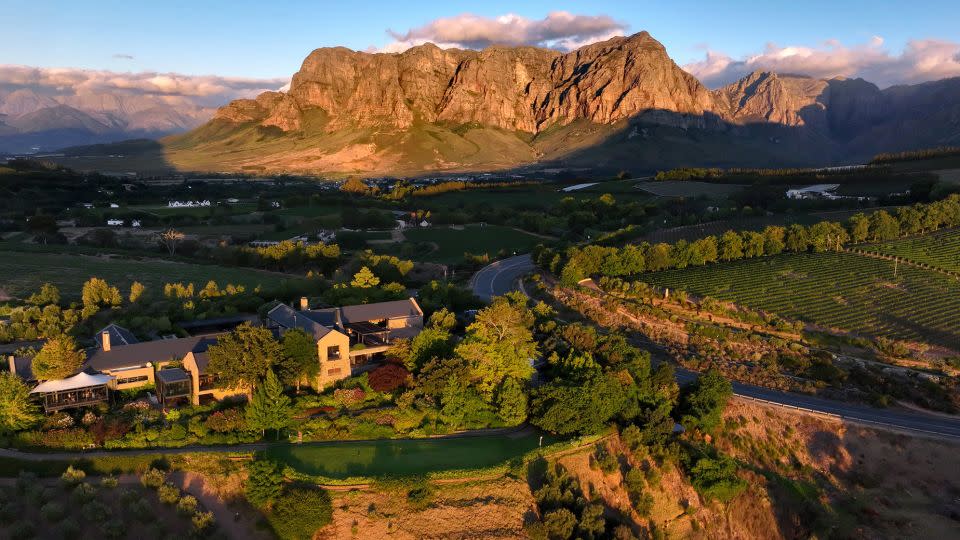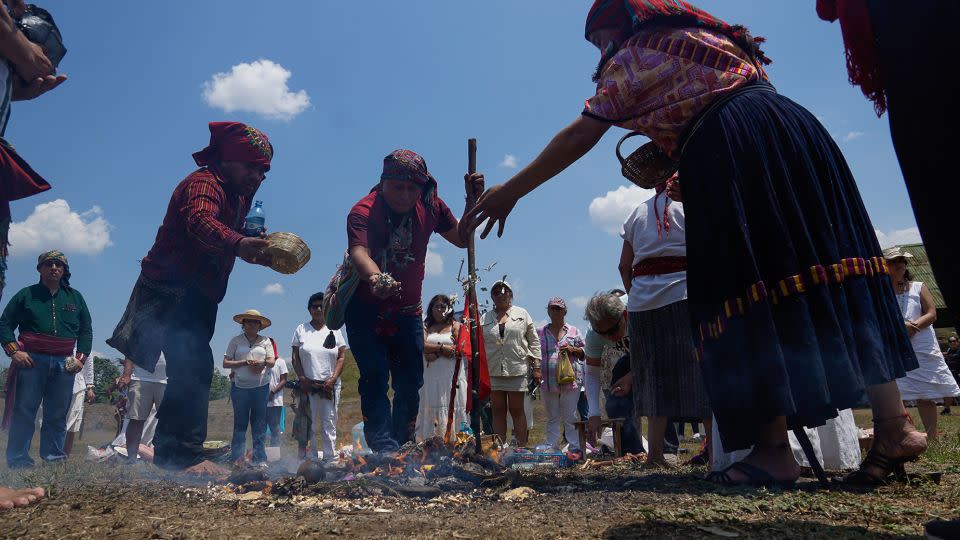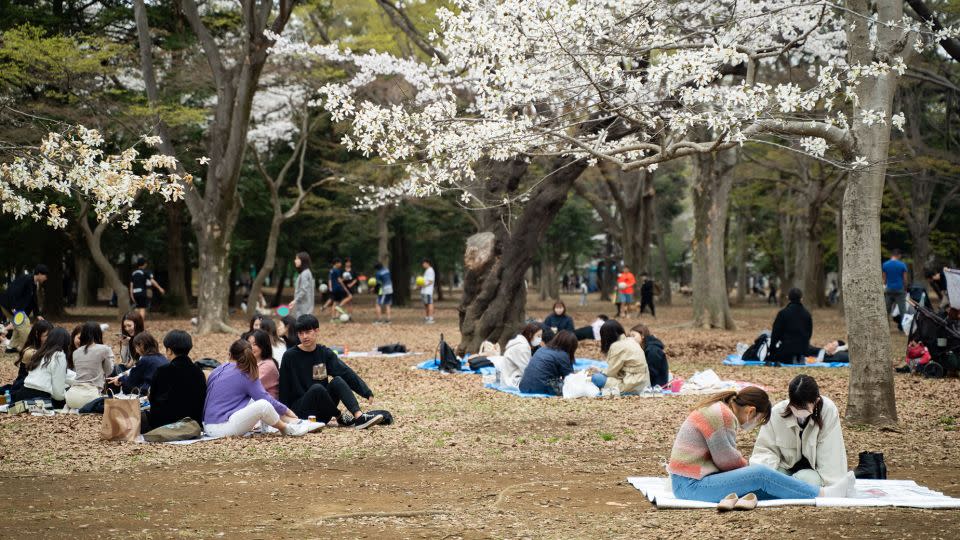Spring equinox: First day of spring ushers in longer days and ancient ways
For those of us who approach things by the Goldilocks Principle (not too little, not too much), spring equinox is practically perfect.
Along with the fall equinox, this is when we get that glorious balance of daytime and nighttime all over the world – from the steamy equator to the frigid poles – with just about 12 hours of each. No one goes through the extremes like you see with the winter solstice or summer solstice.
In 2024, spring equinox is either on Tuesday, March 19, or Wednesday, March 20. All that depends on where you’re located.
Precisely when will the spring equinox happen?
The spring equinox will arrive exactly at 3:06 UTC (Coordinated Universal Time) on Wednesday, March 20, according to EarthSky.
For the vast majority of people in the Western Hemisphere, that places the equinox on Tuesday, March 19. Here’s a breakdown of times and dates at select cities around the world (adjusted for Daylight Saving Time):
• Anchorage (Alaska): 7:06 p.m. Tuesday
• Las Vegas (Nevada): 8:06 p.m. Tuesday
• Guadalajara (Mexico): 9:06 p.m. Tuesday
• Chicago (Illinois): 10:06 p.m. Tuesday
• Toronto (Canada) and Jacksonville (Florida): 11:06 p.m.
For time zones east of the above, the equinox falls on Wednesday, March 20. Some more places:
• Halifax (Canada): 12:06 a.m.
• Dublin (Ireland) and Accra (Ghana): 3:06 a.m.
• Berlin (Germany): 4:06 a.m.
• Alexandria (Egypt): 5:06 a.m.
• Ankara (Turkey): 6:06 a.m.
• Dubai (United Arab Emirates): 7:06 a.m.
• Mumbai (India): 8:36 a.m.
• Chiang Mai (Thailand): 10:06 a.m.
• Hong Kong: 11:06 a.m.
• Tokyo (Japan): 12:06 p.m.
Don’t see your city represented? Click here to look up the exact moment of the spring equinox where you’re located.
For some, fall is in the air

Folks in the Northern Hemisphere are looking forward to longer days, perfumy flowers and a burst of greenery. But for people living south of the equator, this equinox means they are heading into fall.
So for Chileans, South Africans and Australians, among others, this is a time to embrace cooler autumn weather.
For people who reside near the equator in places such as Quito, Ecuador, or Singapore, none of this is really a big deal. They get roughly 12 hours of daylight and nighttime year-round.
Spring equinox has another name
If you ever hear anyone say “vernal equinox,” it means the same thing.
The term equinox comes from the Latin word “equinoxium,” meaning “equality between day and night.” And vernal also comes from Latin and means “spring.”
Why does the spring equinox happen?

The Earth rotates along an imaginary line that runs from North Pole to South Pole. It’s called the axis, and this rotation is what gives us day and night.
However, the axis tilts at 23.5 degrees, as NASA explains. That positions one hemisphere of the planet to get more sunlight than the other for half of the year’s orbit around the sun. This discrepancy in sunlight is what triggers the seasons.
The effect is at its maximum in late June and late December. Those are the solstices, and they have the most extreme differences between day and night, especially near the poles. (That’s why it stays dark for so long each day during the winter in places such as Scandinavia and Alaska.)
But since the winter solstice three months ago in December, you’ve probably noticed that our days have been getting longer in the Northern Hemisphere and the nights shorter. And now here we are at the spring equinox!
Going forward, the Northern Hemisphere will be more exposed to the sun than the Southern Hemisphere. That’s why it gets increasingly warmer as we head toward the summer solstice in June.
The equinoxes aren’t exactly ‘equal’
Bonus time! It turns out you get a tad more daylight than darkness on the equinox – and how much so depends where you are on the planet.
How does that happen when it’s supposed to be 12 hours of day and 12 hours night?
As the US National Weather Service explains, the “nearly” equal hours of day and night are because of the complex way a sunrise is measured and the refraction of sunlight in our atmosphere.
This bending of light rays “causes the sun to appear above the horizon when the actual position of the sun is below the horizon.” The day is a bit longer at higher latitudes than at the equator because it takes the sun longer to rise and set the closer you get to the poles.
We got that truly equal day/night split a few days before the official spring equinox. That’s called the equilux.
Special sites and celebrations

Humans have had a love affair with spring and all thing celestial.
In Mexico, the Mayan site Chichén Itzá has special equinox ties. At the site, the impressive pyramid known as El Castillo was aligned so that a shadow outlining the form of a snake of light (Kukulcán) descends the steps on the equinoxes.
In England, the mysterious stone structure of Stonehenge has been a popular gathering place for solstices and equinoxes for ages. English Heritage currently organizes the events.
On the Mediterranean island Malta, an ancient megalithic temple in the Mnajdra complex is aligned so that the rays of the morning sun of the spring and fall equinox shine directly through the main entrance.
Cultures around the world celebrate the equinox. Here are a few:

In Japan, Vernal Equinox Day is a public holiday (on Wednesday, March 20, this year). Many people still adhere to old traditions such as visiting family graves and holding family reunions to mark the spring equinox.
Nowruz is the Persian New Year. Also known as Nauryz, Navruz or Nowrouz, it means “new day.”
It’s no coincidence it falls on the first day of spring. The Iranian calendar is a solar calendar, meaning time is determined, through astronomical observations, by Earth’s movement around the sun. So, the first day of the year always kicks off with the vernal equinox.
It’s a celebration of new beginnings: wishing prosperity and welcoming the future while shedding away the past. That’s why families use this time to deep clean their homes and closets and buy fresh clothing.
In China, trying to stand an egg upright is a popular game during the spring equinox, according to VisitBeijing.com. The custom is thought to go back thousands of years, and it’s believed that if people can get an egg to stand, they will have good luck. And people across China eat local spring vegetables.
For more CNN news and newsletters create an account at CNN.com
